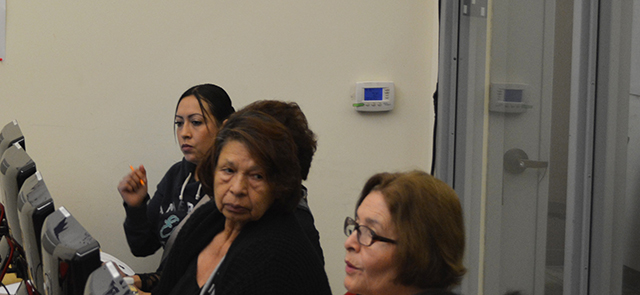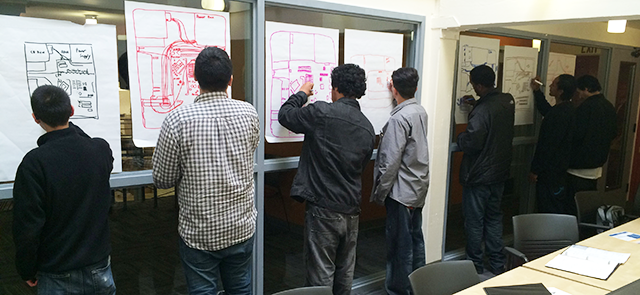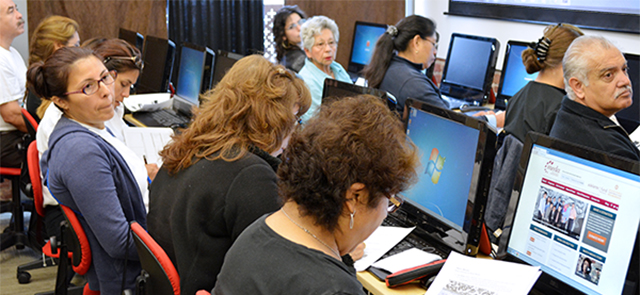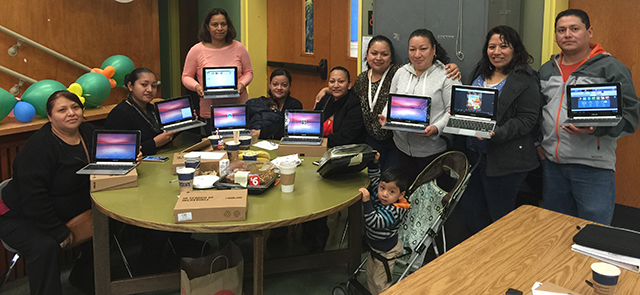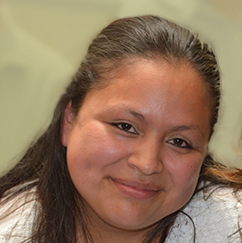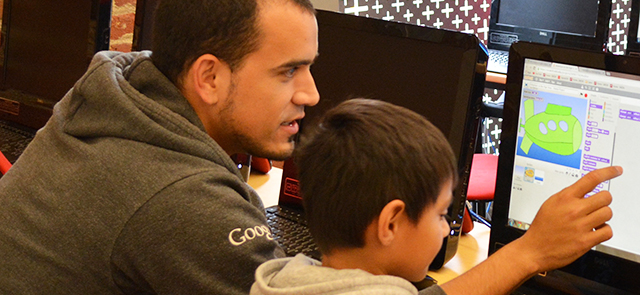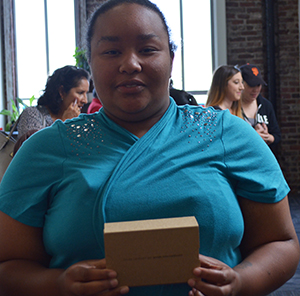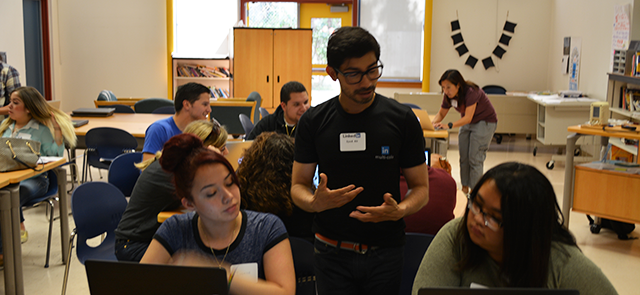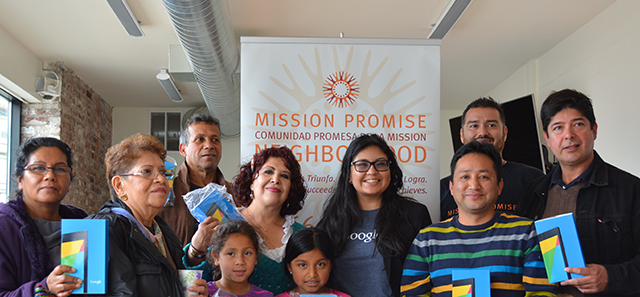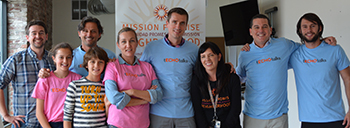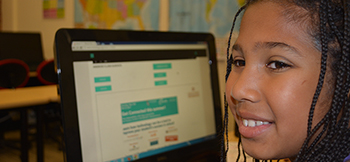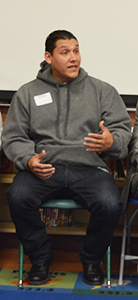Monica stopped by so that her youngster could take a digital storytelling workshop. Jorge wanted to learn how to look for work online. Middle-schooler Jasmine wanted to create her first mobile app.
These were just three of the many Mission Promise Neighborhood families that came to Everett Middle School last night for the seventh “Get Connected!” event. This jam-packed evening brought in volunteers from the tech world to teach digital literacy to the underserved Mission community.
Essential sponsorship came in many levels. The event’s Platinum Sponsor was Google, Gold Sponsor was Facebook and Silver Sponsor was Everett Middle School, the latter providing funding and the venue. Community Sponsor Univision was on hand with a deejay to get the crowd going, while Hospitality Sponsor Pollo Campero stepped up to the plate and provided much-appreciated dinner for all attendees.
The evening started with a resource fair, so that families could learn of all the free services in the Mission. Support for Families, La Raza Centro Legal and SF-Marin Food Bank all tabled.
Comcast staff was on hand, signing up residents with packages as low as $9.95/month. That broadband company’s Internet Essentials program is available to students with free or reduced-cost lunch — or at a school where a high percentage of students are — with the 400+ students at Everett Middle School all deemed eligible.
Such a connection is vital. Despite the Mission being the center of all things tech, too many Mission families are using just a smartphone for their internet connection at home. That is not enough. Families and students need a computing device with a keyboard so that a parent can look for a job online or a student can write an essay.
A recent School Climate Survey done at Everett revealed that just 59 percent of these middle-schoolers have access to a desktop or laptop computer at home, while 51 percent have a tablet and 74 percent have a smartphone. One of the aims of the Mission Promise Neighborhood, the federal initiative of which Everett Middle School is a part, is to provide education on the need for high-speed internet and a computing device in the home for all Mission students.
The workshops at the event helped with this education. Volunteers taught everything from basic digital literacy to internet safety to creating apps. These one-hour classes ran from 5 p.m. to 7 p.m.
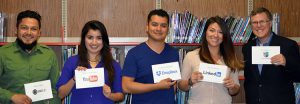 After the workshops, a career panel was on hand to share their stories of getting into tech. Panelists included: Roberto Mejia from Jones.IT, based in the Mission; Claudia Hernandez from YouTube; Abraham Velazquez from DropBox; Veronica Murillo from LinkedIn; and Jim Van Tassel from Univision. Their inspiring stories showcased that there is a place at the table for everyone in the tech sector.
After the workshops, a career panel was on hand to share their stories of getting into tech. Panelists included: Roberto Mejia from Jones.IT, based in the Mission; Claudia Hernandez from YouTube; Abraham Velazquez from DropBox; Veronica Murillo from LinkedIn; and Jim Van Tassel from Univision. Their inspiring stories showcased that there is a place at the table for everyone in the tech sector.
After enjoying their chicken dinners generously donated by Pollo Campero, it was time for a raffle. Anyone who had garnered three signatures from the resource fair or workshops was eligible.
There were gift cards. Tablets. Even a Chromebook. All winners grinned from ear to ear when their names were announced.
The seventh “Get Connected!” event was a definite success, with the community brought together and lives bettered.
____________________________________________________________
About Mission Promise Neighborhood
The Mission Promise Neighborhood is a citywide community partnership that was created to support kids and families living, working and attending school in the Mission District. It brings together schools, colleges, community organizations and community leaders to help kids graduate and families achieve financial stability.

